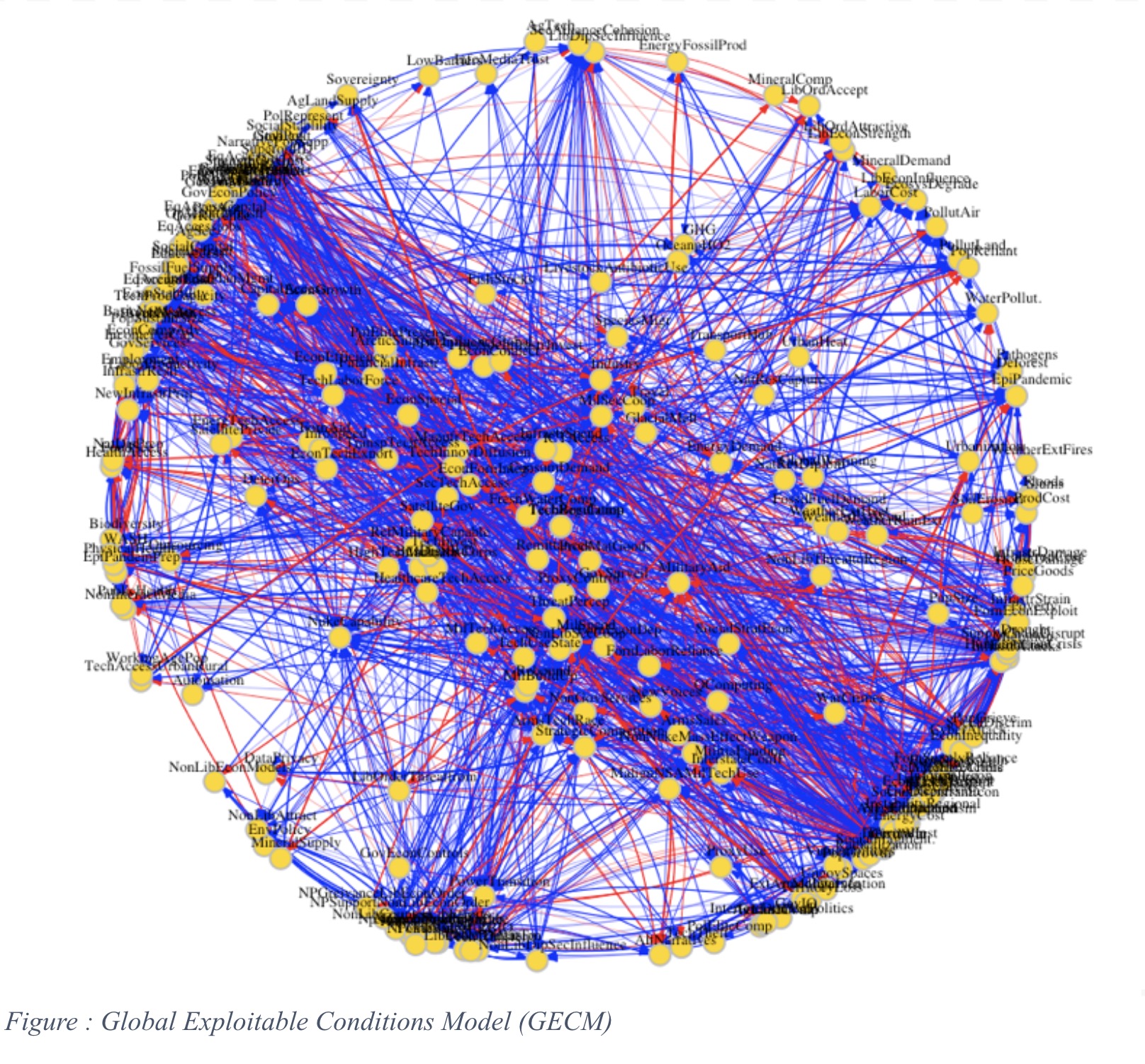Complex System Analysis (“Systems Thinking”) & Applications

What is Complex System Analysis?
A methodological approach that analyzes systems of interconnected, interdependent parts through a variety of conceptual and computational modeling tools; causal loop diagrams undergird and facilitate this analysis.
How Can Complex System Analysis Help You?
Provides insights into the non-linear, integrated, and interconnected nature of the systems (organizational, human, physical, etc.), that organizations are trying to operate in and impact, generating tools and strategies to leverage rather than be overwhelmed by complexity. Complex System Analysis can yield…
Holistic perspective
View complex problems and environments as an interconnected system that functions as more than the sum of the individual parts.
Non-linear dynamics and feedback loops
Discover ways in which systems are self-reinforcing and/or self-limiting, through balancing and reinforcing feedback loops within the system, and how these can limit or amplify your organization’s impact on a system.
Identification of intervention points
Review novel possibilities for system change by pinpointing critical nodes that enable decision-makers to pursue courses of action.
System-level strategic foresight
Anticipate unintended consequences over multiple time horizons by mapping how individual nodes influence the entire system through first, second, third, and n-th order effects.
Application Examples
NSI has used complex systems analysis and causal loop diagraming in support of numerous client problem sets to provide organizational decision makers with sense-making maps of complex systems and systems thinking-based analysis, allowing customers to understand and better leverage that complexity to maximize preferred outcomes, better apply limited resources—and avoid unintended consequences.
Global & AFRICOM Exploitable Conditions Modeling
NSI developed a system-of-systems model of the operational environment (OE) to support systems thinking approaches to planning, resource allocation, effects-based assessments, collections prioritization, and partner & interagency coordination. This concept-based system-of-system drew on extensive empirical research and connects 17 sub-systems, across economics, energy, politics, military, the environment, technology, and the information space. It was then tailored to U.S. Africa Command’s (AFRICOM’s) 53-country area of responsibility (AOR) and deployed to analyze specific topics and problem sets, as well as used to generate a series of short-form “Quick Looks.” These capture portions of the complex model as causal loop diagrams and identify specific leverage points where the Command, as well as allies, partners, and the interagency, could improve outcomes.


Dynamics of Israeli and Palestinian Security Requirements in the West Bank
As part of a collaborative review for the US Security Coordinator for Israel and the Palestinian Authority, NSI used loop diagrams to model the relationship between (a) Israeli and Palestinian Authority (PA) sovereignty and legitimacy, (b) Palestinian and Israeli settler frustration and violence, and (c) Israeli Defense Forces/Coordinator of Government Activities in the Territories (IDF/COGAT) activities in the West Bank. NSI also used the loop diagrams to identify a series of findings on the dynamics driving drive the security challenges and risks that impact Palestinian security sector reform and institutional development effectiveness. NSI’s modeling provided USSC and other stakeholders with a clear understanding of the system linking Israeli and Palestinian internal politics to cross-border security, a critical prerequisite for identifying areas in which USSC activities might have the greatest positive impact.


The Dynamics of ISIL’s Success
NSI used loop diagrams to synthesize its multi-disciplinary research in support of U.S. Central Command (CENTCOM)/Special Operations Command Central (SOCCENT) and map the findings about the sources of strength and vulnerabilities behind an incredibly complex social movement, the Islamic State in the Levant (ISIL). Understanding the complex social, political, diplomatic, and military system in which ISIL operated was crucial for reducing strategic surprise and avoiding US and allied actions that would unintentionally strengthen the group. NSI also used the causal loop diagram to identify a series of potential effects and observable indicators to help SOCCENT better track changes, successes, and setbacks experienced by ISIL.


